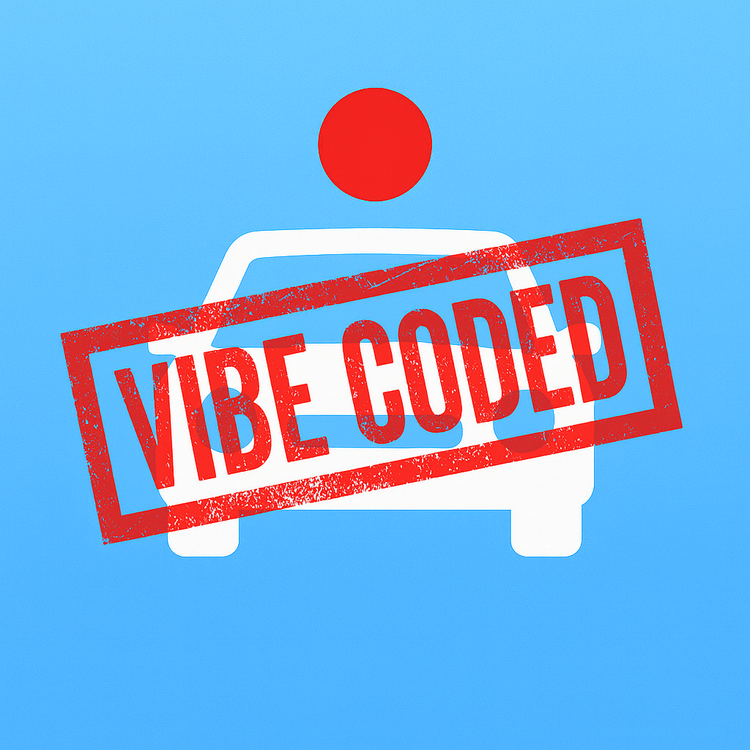How I AI - June 2025

Half of the issue with learning stuff is learning what the scope you COULD do with it. So it's good to see what others are doing with a tool, and then thinking about how I could use it. This is a bit of a log of what I've - and others have - done recently. Its not exhaustive, but might give a few people ideas.
We have the following available to us both:
- Claude (paid), Claude Code etc
- Gemini (paid via Google Workspaces)
- OpenAI (paid)
Because both of us are using these, and both of our employers are willing to pay for some of the tools, we split the account between us - eg I (expensed via Tend) pay for Claude, Leonie (expensed) pays for OpenAI, and we both get to use both tools.
They are very much good for different things. Claude is great for code and writing. Gemini is a great writer and summariser, especially of a lot of documents (video, google docs etc). OpenAI I'm still getting used to :)
Leonie's been using tools for wire framing (UXPilot), as well as Claude. She's not a designer, but has good design sense and taste. Her work have a designer on contract, but generated wire frames are often enough, with the existing style guide / design system, to give to an engineer to implement.

This has saved them days of work - and kept their designer's workload in a manageable state. It's not going to replace a designer - but it means the designer can focus on the higher-value bits, not filtering a product managers vision into a design system's visuals.
Claude has been remarkably good and taking a screenshot from UX Pilot, and generating a React page which she can click around with. None of this code ends up in production, but its a massive creative shortcut for her.
She's also using it for product research synthesis and other bits.
I've been using Open WebUI at home a bit, connected to AWS Bedrock for Claude models. We've just started an internal evaluation of that and LibreChat for deployment inside Tend.
We are trying to avoid having to pay for (number of employees) x (monthly fee) x (number of products), so using a single api key for OpenAI and Anthropic should be cheaper and easier. (We already have Gemini Pro via Google Workspaces)


Not sure which one I prefer at the moment. LibreChat has better connections to OpenAI and Anthropic (we have to use a Bedrock proxy for Open WebUI), but otherwise they are very similar.
Once those are rolled out, we just have to pay for the servers, and the token consumption. We already maintain similar systems for the datawarehouse (AirByte, Metabase, DBT), so this isn't a stretch for us. Self-hosting also allows us a bit more control over where anything uploaded goes, as we control the file storage and the selection of models.
We (Tend) are doing various R+D projects, some of which will qualify for the Research and Development Tax Incentive (RDTI). Basically, we write a proposal, IRD review it (with well published guidelines), and if approved, we can claim back 15% of our spend.
The Callaghan Innovation fund had a similar thing before they got restructured, and we have used this in the past.
Writing a proposal, however, is quite involved, even if you ignore having to do a bunch of research first.

So I wrote a prompt to get Claude to interview me to fill in the form. I gave it examples of what each question was looking for, but no context on our specific problem.
Hi. I need to you interview me for a RDTI application submission. RDTI is Research and Development Tax Incentive of the New Zealand Government and Inland Revenue Department (IRD).
I've included the interview questions below, with some descriptions of what each one is and what sort of information is needed.
RDTI can be found here on the internet: https://www.rdti.govt.nz/This page is especially good: https://www.rdti.govt.nz/is-my-r-and-d-eligible
# Section: Overview
## Interview Question: Project Name
* the name of the project, short and pithy and to the point
## Interview question 1: Project Objective
* what the objective is of this project, fairly short - 1000 tokens
* Outline the reasons for undertaking the project – what are the key commercial and technical objectives? (1,000 character limit including spaces)
* Notes to be added here to provide high level information about the objectives of the project e.g.: "Create new token-based authentication mechanisms for a multiuser online portal"
# Section: Core Activity
## Interview Question 2: Core activity name
# Interview Question 3: Core activity description
Describe the process of testing, experimentation or analysis that you used or are proposing to use to evaluate the possible solution(s) to the scientific or technological uncertainty. You can group a series of tests, investigations or experiments together as one core activity provided they are aimed at testing the same solution or related solutions.(6,000 character limit, including spaces)
## Interview Question 4: Core activity Uncertainty which must be resolved
Describe the scientific or technological uncertainty that your core activity had a material purpose of resolving
(and a whole load of examples for this one)
It went thru each question, asking each one in tern like a human interviewer might - and in some cases pushing for more info. I then put in the supporting activities
# Section: Supporting Activity
## Interview question 1: Describe the supporting activity
This is likely to also
## Interview question 2: How does this satify the supporting activity definition
Describe why the supporting activities support the core activities as their only or main purpose, and are required for and integral to the core activity.
Once you have collected enough of these - when I tell you to stop - please output in the following format:
# Supporting Activity 1 (increment the number for each one)
## Title of the supporting activity (short, based on the description)
## Description
The description, based on what I entered for question 1, and pick the most appropriate of the following, based on that
(list of the activities from the RDTI docs, and which page they are on)
I did this over about an hour or so. It spat out the results, which I threw into a Google Doc, intending to edit it heavily the next day.
Reading it the next day, it was pretty much spot on - I had to do a few minor changes, but it was mostly around tone (ie, in my voice), not content. It was also a pretty persistent interviewer, when I was sort of at the end of my energy for the day and didn't provide enough information.
The "get the LLM to interview me" method seems to be quite a useful one.

At work, we have a client certificate which we need to roll out to 300+ desktops. We have processes for doing it on machines we manage (Powershell, via NinjaRMM) and our MSP has processes (Intune I expect).
But we have a segment of users on their own devices, and frequently out of NZ timezone. So I built a windows installer to do this.
I knew about WIX for building MSIs, but I've never used it, so I asked Claude to build it, and with a bunch of iteration, I ended up with a basic MSI which includes the certificate(s), a Powershell script to install and setup our VPN connection, all with no more user interaction than "click next and finish".
I wouldn't call this vibe coding - I was very much checking the output. But I wasn't doing a lot of WIX work, it was all telling Claude what I wanted.
I have a WIX installer which installs a set of 5 certificates into the windows certificate store. Is there a better way to do this than to use Powershell? eg does WIX/MSI support it natively? How would I do that?
ok, if I have that XML in the file test.wxs, how do I go about building it? I have wix v6 installed.
I've made some minor changes, and this works. However when I run it, there is pretty much no UI. Can we add a basic "Press next to install" kind of thing? (I uploaded the edited wxs file)
thanks, thats working GREAT. So in addition, I have a powershell script which sets up a IPSEC VPN. Is there a way to either use this powershell in the installer to install the VPN, or does WIX have a toolset extension which will set one up for me?
I would have preferred to use Claude Code for this, but when I do Windows stuff, I have to use a remote EC2 instance - so I was copying files over RDP like an animal.
A slow painful animal.
But it works. And so our IT person can now send the MSI to a user, have them run it and test it (by hitting a page which shows the certificate info), and then only remote in to fix the few where it doesn't work for some reason.
The macOS variant of this was a bit easier - mobile profiles! - but I forgot those exist until I asked Claude
Is there some way to do this on a mac?
I did that one by hand, cos frankly, it was pretty trivial.
Geoff is, for me, sometimes a bit OTT. But this is a very good read. Especially the last few slides:
This year is a very bad year to be asleep at the wheel




